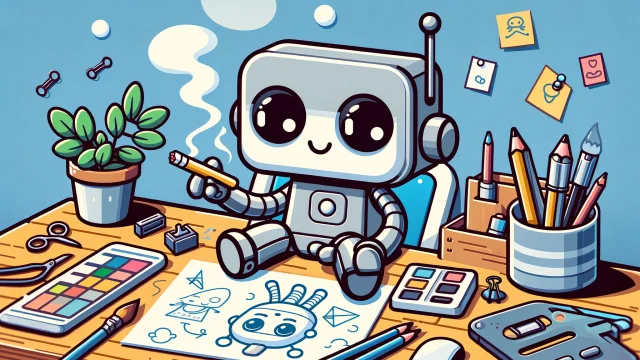Dragon Ball Rig: A New Era of Animation and Gaming
- Dragon Ball Rig: A New Era of Animation and Gaming
- 1. What Is Rigging in Animation?
- 2. The Role of Rigging in Dragon Ball Media
- 3. Evolution of Rigging in Dragon Ball
- 4. Dragon Ball Rigging in Fan Creations
- 5. Tools Used for Dragon Ball Rigs
- 6. Challenges in Dragon Ball Rigging
- 7. The Future of Rigging in Dragon Ball
- 8. Conclusion: The Power of Dragon Ball Rigging
Dragon Ball Rig: A New Era of Animation and Gaming
In the world of Dragon Ball, the evolution of animation and gaming has always played a pivotal role in bringing the series to life. Behind the scenes of stunning visuals and dynamic battles lies a crucial tool: rigging. The term “Dragon Ball rig” refers to the digital skeletons used in animation and game development to bring characters like Goku, Vegeta, and Frieza to life with fluid and realistic movements.
This article explores the role of rigging in Dragon Ball media, its impact on animation and gaming, and how it continues to evolve with modern technology.
1. What Is Rigging in Animation?
1.1 The Basics of Rigging
Rigging is a process in 3D animation where a digital skeleton is created to control a character’s movements. It involves:
- Bones and Joints: Structures that define how a character moves.
- Controls: Tools that animators use to manipulate the skeleton.
- Skinning: Attaching the character’s 3D model to the rig, allowing it to move naturally.
1.2 Importance in Animation
Rigging is essential for creating lifelike animations. It ensures characters can move, fight, and express emotions seamlessly, making it a cornerstone of Dragon Ball media.
2. The Role of Rigging in Dragon Ball Media
2.1 Animation
From the hand-drawn art of the original Dragon Ball series to the 3D models in Dragon Ball Super: Super Hero, rigging has revolutionized how characters are animated. Key examples include:
- Dynamic Combat: Rigging allows animators to choreograph complex fight sequences with precise movements.
- Facial Expressions: Detailed rigs enable characters to express a wide range of emotions, enhancing storytelling.
2.2 Video Games
Rigging is crucial in Dragon Ball games, where players control characters in real time. Games like Dragon Ball FighterZ and Dragon Ball Xenoverse 2 rely on advanced rigs for:
- Smooth Animations: Ensuring attacks, combos, and transformations look fluid.
- Player Interaction: Rigs allow for responsive controls, making gameplay feel immersive.
2.3 Motion Capture Integration
In modern Dragon Ball projects, motion capture (mocap) is used alongside rigging to capture real-life movements. This technique enhances realism in both animation and gaming.
3. Evolution of Rigging in Dragon Ball
3.1 Early Days
In the early days of Dragon Ball animation, movement was hand-drawn, relying on the skill of animators to create fluidity. Rigging became prominent with the rise of 3D animation.
3.2 Modern Advances
With technological advancements, rigs have become more sophisticated, allowing for:
- Real-Time Physics: Simulating hair, clothing, and energy effects.
- Customizable Controls: Animators and developers can fine-tune rigs for specific scenes or attacks.
- Enhanced Transformations: Smooth transitions between forms, such as Goku’s Super Saiyan transformations.
4. Dragon Ball Rigging in Fan Creations
4.1 Modding Community
Rigging tools are widely used in fan-made Dragon Ball content, including:
- Custom Characters: Fans create their own rigs for original characters or transformations.
- Fan Animations: Rigging software like Blender or Maya is used to produce high-quality fan films and tributes.
4.2 VR and AR Experiences
Fan developers use rigs to bring Dragon Ball characters into virtual and augmented reality, creating immersive experiences.
5. Tools Used for Dragon Ball Rigs
5.1 Industry-Standard Software
Professional studios and fan creators use tools such as:
- Autodesk Maya: Widely used for character rigging and animation.
- Blender: A free, open-source option popular among independent creators.
- Unreal Engine: Powers many Dragon Ball games, integrating rigs with real-time rendering.
5.2 Game-Specific Engines
Games like Dragon Ball Xenoverse 2 utilize proprietary engines tailored to the series’ unique animation style.
6. Challenges in Dragon Ball Rigging
6.1 Complexity of Characters
Dragon Ball characters often feature elaborate designs, such as flowing hair, detailed muscles, and energy auras, making rigging a complex process.
6.2 Combat Fluidity
Ensuring that characters move fluidly during fast-paced combat requires precise rigging and testing.
6.3 Balancing Realism and Style
Maintaining the exaggerated style of Dragon Ball while incorporating realistic movement is a challenge for riggers.
7. The Future of Rigging in Dragon Ball
7.1 AI-Assisted Rigging
Artificial intelligence is set to revolutionize rigging by automating repetitive tasks, allowing animators to focus on creativity.
7.2 Virtual Reality Integration
As VR becomes more mainstream, rigs will need to adapt to immersive environments, enabling players to interact with Dragon Ball characters like never before.
7.3 Cross-Media Innovations
Rigging will continue to evolve as Dragon Ball expands into new media formats, ensuring the franchise remains visually stunning and engaging.
8. Conclusion: The Power of Dragon Ball Rigging
Rigging is an invisible yet essential component of the Dragon Ball experience, breathing life into characters and battles. From the detailed animations in movies to the responsive gameplay in video games, rigs ensure that every punch, transformation, and Kamehameha feels authentic.
As technology advances, the art of rigging will continue to push the boundaries of what’s possible in animation and gaming, keeping Dragon Ball at the forefront of storytelling and entertainment. Whether you’re a fan enjoying the latest episode or a gamer executing a flawless combo, the power of rigging is always at work behind the scenes.

